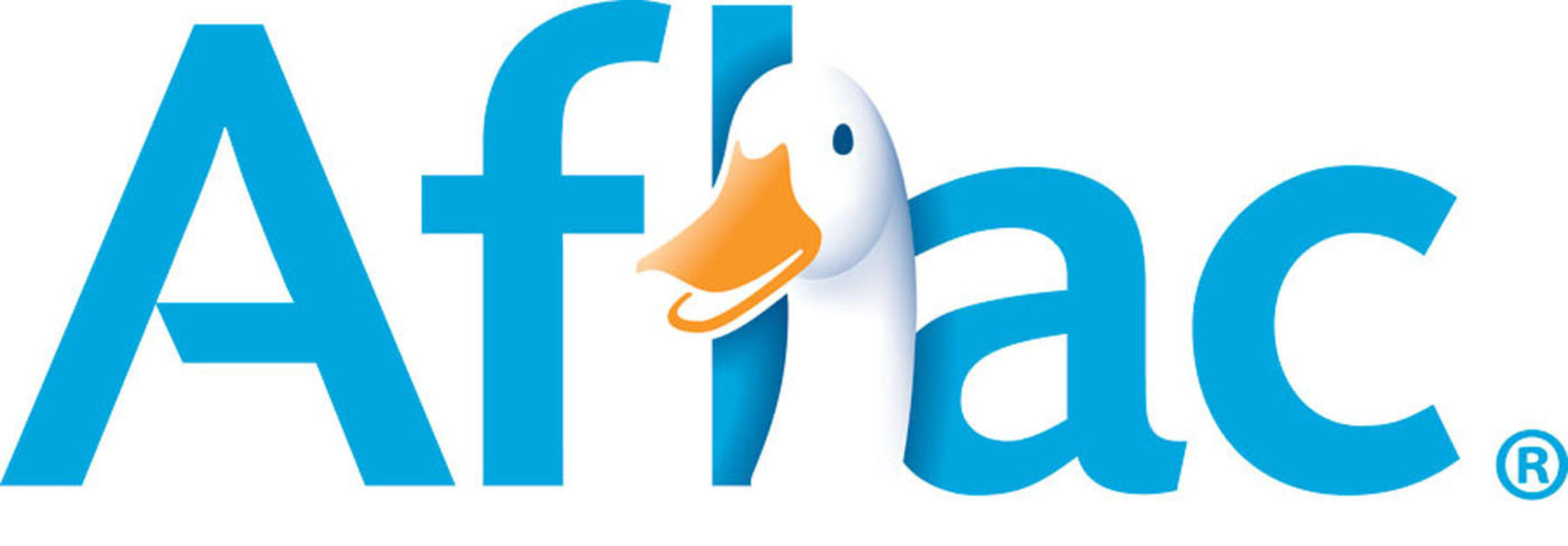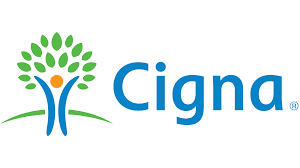Top 5 Worst Medicare Supplement Companies
Based on my personal experience as a Medicare broker, Bankers Life and United American Insurance Company are among the worst Medicare Supplement companies – due to aggressive sales tactics and high premiums.
I also believe the worst Medicare Supplement plan is Plan K because it provides minimal coverage, paying only 50% of most benefits like the Part A deductible, skilled nursing facility coinsurance, and hospice care.
It also offers no coverage for Part B excess charges, leaving you responsible for significant out-of-pocket expenses.
Later on this page, I’ll highlight a few other Medigap plans that I recommend avoiding. I also want to spotlight several Medicare Supplement (Medigap) companies that lack dependability and trustworthiness.
I’ve considered key factors like:
- Their monthly premiums
- Premium stability
- Overall experience in the Medicare market.
With over 10,000 baby boomers entering the Medicare market daily, it’s no surprise that every insurance company in America wants a piece of the business. After experiencing the highs and lows over 20+ years in the Medicare field, my goal is to help you make a smart choice when picking a Medigap provider.
-
Important tip:
Evaluating a Medicare Supplement company based on benefits alone is not enough. All companies provide the same benefits for each plan level, regulated by CMS and your state insurance department.
Example: Medico’s Medigap Plan G benefits are the same as State Farm’s Medigap Plan G benefits.
Worst Medigap Company By Price
The biggest red flag with a Medicare Supplement provider is high premiums.
We put together a chart comparing the premiums of popular Medigap plans offered by different companies. We highlighted the most reliable providers and pointed out those who clearly charge too much.
| Price | Company | Plan G | Plan N | Plan A |
|---|---|---|---|---|
| Good | Cigna | $132.64 | $98.50 | $130.65 |
| Good | Aflac | $149.37 | $106.47 | $143.28 |
| Good | Mutual of Omaha | $147.37 | $111.89 | $147.94 |
| Too high | Medico | $159.15 | $116.83 | $151.19 |
| Too high | United American Insurance Company | $199.00 | $216.00 | $148.00 |
| Too high | GPM Health and Life Insurance Company | $264.68 | $158.97 | $219.30 |
| Quotes are the average monthly rate for a 65 year-old male nonsmoker living in El Paso, TX (zip code 79936). | ||||
Premium analysis:
In the area observed, United American Insurance Company and GPM Health charge up to 34-50% higher rates for Plan G, 61-120% higher for Plan N, and 14-68% more for Plan A compared to Cigna, a top lower-cost Medicare Supplement provider.
Worst Medigap Companies
Based on our research and experience, we have concluded that the following are the worst Medicare Supplement providers.
#1: Bankers Life
Bankers Life has offered Medicare Supplement plans for many years. Their door-to-door sales approach often involves high-pressure agents pushing a single, expensive option.
We’ve received many calls from Bankers Life policyholders, reporting they paid nearly 50% higher premiums than if they had enrolled with a more reputable Medicare Supplement provider. Coupled with a high volume of complaints on the Better Business Bureau, it’s clear that customers are not happy.
Bankers Life doesn’t even offer the option to obtain an insurance quote online. To receive one, you must fill out a form on their website and wait to be contacted by an insurance agent.
#2: United American Insurance Company
Despite its longevity, United American Insurance Company stands out for all the wrong reasons. Many policyholders have experienced unexpected premium increases and are overpaying by nearly 40% compared to leading companies.
Beneficiaries have also expressed frustration over policies not covering certain conditions or scenarios as initially expected.
Some reviews mention the difficulty in reaching customer support for assistance, understanding policy benefits and restrictions, and navigating claim processes. According to NerdWallet, they are ranked with just 1.5 stars.
#3: Medico
With Medico’s long history, it seems they haven’t kept up with competitive rates. We’ve had many calls from Medico policyholders who noticed they’re paying about 30% more compared to top companies.
The Better Business Bureau website has also received negative feedback from Medico policyholders due to inadequate transparency in coverage details, a high rate of claims denial, and – if they can get ahold of anyone – horrible customer service.
#4: State Farm
While State Farm is well known in the car insurance industry, its footprint in the Medicare Supplement market has been less than impressive.
State Farm’s Medigap rates are often higher compared to other companies. Reviews and feedback point out customer service and policy flexibility concerns, indicating that State Farm may not be the best choice for those seeking Medigap coverage.
State Farm should also step up its game and offer perks like premium discounts or fitness program incentives that leading Medigap providers are already offering.
#5: GPM Health and Life Insurance Company
GPM Health and Life Insurance Company earns a spot on our list of the worst Medicare Supplement providers due to its higher-than-average premiums and lower financial strength rating.
With a B++ rating from AM Best, GPM falls below the more trusted A-rated carriers many Medicare beneficiaries rely on for long-term stability.
One clear example is their Plan G monthly premium, which comes in at $154.81 for a 65-year-old female. In comparison, Mutual of Omaha – an A+ rated company with decades of proven reliability – offers the same Plan G coverage for just $104.78 per month.
That’s a difference of $50.03 per month or roughly 47.7% more expensive with GPM for identical benefits.
In an era where consumers are more cost-conscious and regulatory pressures on Medicare Supplement insurers continue to grow, GPM’s smaller footprint, weaker financial rating, and inflated pricing make it a risky and costly choice.
For those looking for value, Mutual of Omaha clearly stands out as the better option – offering lower premiums, stronger financial backing, and a longstanding reputation in the Medicare space.
Best Alternative Medigap Companies
Let’s look at some alternatives to the worst Medigap companies – like the top providers we partner with and trust for their reliability.
Aflac:

- Offers Medigap Plans F, G, and N
- 9.2% more affordable premiums on average
- Up to 10% household discounts
- Fast claims processing (typically one business day)
Having worked with Aflac firsthand, I can confidently say they’re a key player in the Medicare Supplement insurance space.
A standout feature of their Plan G is the household discount of up to 10% for those who qualify. Their 24/7 customer service and easy claims support make the process seamless.
Aflac’s Average Monthly Premiums:
- Plan G: $130 – $175
- Plan N: $110 – $140
What really sets Aflac apart is the guaranteed renewability of their Medicare Supplement plans—pay your premiums on time, and your policy stays active.
With no network restrictions, you can visit any doctor or provider who accepts Medicare. Most claims are processed within a day, making the experience even smoother.
Aflac’s A+ Financial Strength Rating from A.M. Best and A+ Better Business Bureau rating show its reliability and focus on customer satisfaction.
Beyond Medicare Supplements, it offers a range of coverage options, including dental, accident, critical illness, life, hospital, and short-term disability insurance.
Mutual of Omaha:
- Offers Medigap Plans A, D, F, G, M and N
- Up to 12% household discount
- Nationwide provider network
- Access to the Mutually Well program
- Dental policy options with up to a 15% bundling discount
- 44% fewer complaints than average
Mutual of Omaha is a company I frequently recommend to my clients for Medicare Supplement insurance. They offer coverage in most states, including the popular Medigap Plan G.
In my experience, Mutual of Omaha stands out for its financial stability, which is backed by an AM Best rating of “superior. ” Forbes even ranked them among the top 5 Medicare Supplement providers for 2024.
Many of my clients appreciate the additional perks they offer, like discounts on vision through EyeMed, hearing services with Amplifon, and access to wellness programs like Mutually Well.
These extras add real value to their plans. However, it’s worth noting that some members have expressed concerns about annual rate increases, which is something to keep in mind when choosing a provider.
Premiums for Plan G typically range between $150 and $200 per month with Mutual of Omaha. Overall, it’s a solid choice for those looking for comprehensive Medigap coverage with a trusted company.
Cigna:

- Offers Medigap Plans A, F, G, and N
- Up to 20% premium discounts
- Healthy Rewards program
- Options to bundle dental, vision, or hearing coverage
- User-friendly online portal
- 24/7 customer helpline
Cigna’s Medigap Plan G is a reliable choice, and its pricing is often very competitive. As one of the largest providers, ranking fourth overall, Cigna has earned the trust of many clients over the years.
Cigna’s Average Monthly Premiums:
- Plan G: $155 – $220
- Plan N: $130 – $190
- Plan A: $162 – $200
A key benefit of Cigna’s Plan G is the potential for savings. You can qualify for up to 20% in premium discounts.
If you include your spouse in the policy, they’ll get the same discount for the duration of the policy—a great option for couples looking to save on healthcare costs.
Cigna also offers useful tools and perks. Their user-friendly online portal makes managing your policy easy, and their Healthy Rewards program provides up to 25% off health and wellness products and services.
You can also bundle dental, vision, or hearing coverage for as little as $32 a month, which many of my clients find valuable.
Now that we’ve covered the worst Medigap companies, I want to share my thoughts on what I see as the worst Medigap plans based on my experience as an agent.
Worst Medigap Plans That Lack Adequate Coverage
When researching Medicare Supplement plans, it’s crucial to understand how they work in real life and where they fall short.
Here’s why I think Plans A, B, K, and L aren’t the best choices, with some real-world examples to highlight their limitations.
#1. Medicare Supplement Plan A: The Most Basic
-
What Plan A Covers:
Plan A covers Part A coinsurance and hospital costs and Part B coinsurance or copayments.
This coverage is basic and it skips several essential benefits.
-
What's Missing:
Coverage for the Part A deductible ($1,676 per benefit period in 2025), skilled nursing facility coinsurance, or Part B excess charges (what a doctor can bill above the Medicare-approved amount, up to 15% more) is not available.
-
Real-Life Scenario:
Imagine you’re hospitalized and have to pay the $1,676 Part A deductible every time you’re admitted. Without coverage for this, those costs add up quickly. Or, if your specialist charges 15% above Medicare’s approved rate for a procedure, you’d be stuck paying that extra out-of-pocket.
#2. Medicare Supplement Plan B: Not Much Better
-
What Plan B Covers:
Plan B adds coverage for the Part A deductible, but the improvements end there.
It exposes you to gaps in skilled nursing facility care and Part B excess charges.
-
What's Missing:
There is no coverage for skilled nursing facility coinsurance, which costs $209.50 per day for days 21-100 in 2025, or Part B excess charges.
-
Real-Life Scenario:
Say you’re recovering from surgery in a skilled nursing facility for a month. For days 21-30, you’d owe $2,095 out-of-pocket ($209.50/day x 10 days). On top of that, if your surgeon charges $3,000 for a procedure but Medicare only approves $2,500, you’d be responsible for 15% of the excess ($500 x 15% = $75).
#3. Medicare Supplement Plan K: Only Covers 50%
-
What Plan K Covers:
Plan K is one of the least comprehensive Medigap plans, covering only 50% of most benefits and leaving significant out-of-pocket exposure.
-
What's Missing:
Plan K only pays 50% of Part A deductibles, hospice care coinsurance, skilled nursing facility coinsurance, and Part B coinsurance/copayments.
It also doesn’t cover Part B excess charges at all.
-
Real-Life Scenario:
Let’s say you need a hospital stay and skilled nursing care afterward. You’d pay $838 of the $1,676 Part A deductible (50%) and $100/day for skilled nursing facility care (50% of $200/day). Even with Plan K’s annual out-of-pocket cap ($7,220 in 2025), you could hit that limit quickly.
#4. Medicare Supplement Plan L: Only Covers 75%
-
What Plan L Covers:
Plan L is a slight improvement over Plan K.
It covers 75% of key benefits but exposes you to significant costs.
-
What's Missing:
Plan L doesn’t cover Part B excess charges or the Part B deductible.
It also only covers 75% of things like the Part A deductible and skilled nursing facility coinsurance.
-
Real-Life Scenario:
If you’re hospitalized and then need skilled nursing care, Plan L would only cover 75% of your Part A deductible, leaving you to pay $419 out of pocket. For skilled nursing care, you’d owe $50/day for days 21-100 (75% of $200/day).
The Real Problem With These Plans: In a Nutshell
- The gaps in Plans A, B, K, and L become apparent when you face actual healthcare costs.
- They might have slightly lower premiums, but the out-of-pocket expenses during a hospital stay, skilled nursing care, or high-cost procedures can far outweigh those savings.
Best Alternatives: Medigap Plan G and Plan N
Medigap Plan G and Plan N are hands-down better options than Plans A, B, K, and L because they offer robust coverage that minimizes your out-of-pocket costs while providing excellent value for your premium.
Here’s Why Plan G Stands Out:
Comprehensive Coverage: Plan G covers everything except the Part B deductible ($257 in 2025). Once you’ve paid that deductible, you won’t have to worry about additional out-of-pocket costs for Medicare-approved services.
These services include:
- Part A deductible ($1,676 in 2025).
- Skilled nursing facility coinsurance ($209.50/day for days 21-100 in 2025).
- Part B excess charges (if your provider charges more than Medicare’s approved amount).
Predictability: With Plan G, your only expense is the Part B deductible, giving you complete financial peace of mind for the rest of the year.
Best for High-Usage Beneficiaries: If you see specialists often, have frequent hospitalizations, or need extensive care, Plan G ensures you’re fully protected without unexpected costs.
Here’s Why Plan N Is Also a Great Alternative:
Affordable Premiums: Plan N generally costs less than Plan G, making it an attractive option for those who want solid coverage but are okay with small copayments, including:
- Up to $20 for doctor visits.
- Up to $50 for ER visits (if not admitted).
Comprehensive Protection: Like Plan G, Plan N covers the Part A deductible, skilled nursing facility coinsurance, and 100% of other Medicare-approved costs after you’ve met the deductible.
Trade-offs: Plan N doesn’t cover Part B excess charges, but you can avoid these by sticking to doctors who accept Medicare assignment.
-
How Do I Decide?
Choose Plan G if you want the most comprehensive coverage and don’t want to worry about copayments or Part B excess charges.
Choose Plan N if you’re looking for lower premiums and are okay with small copayments for doctor and ER visits.
My Advice to You:
If you’re trying to avoid financial surprises, it’s worth looking into more comprehensive options like Plans G or N. They may cost more upfront but can save you thousands in the long run.
Overall, both plans offer comprehensive coverage for major financial risks, long-term value with protection from high out-of-pocket costs, and flexibility to use any Medicare-approved provider nationwide without network restrictions.
Both plans provide far better protection and value than Plans A, B, K, or L, ensuring you’re covered when it matters most.
Bottom Line
Certain Medigap companies may use pushy sales methods and offer superficial benefits to those looking to enroll in a Medigap plan. Remember to dig deeper to fully understand what each provider is truly offering and which plan is right for you.
Key things to think about are premiums, reliability, and longevity in the Medicare industry.
I recommend working with an experienced Medicare broker with at least five to ten years of expertise in the field. They can present you with a variety of options from different providers. Thanks!
Sources: Medigap Basics | Aflac | Cigna | Mutual of Omaha
